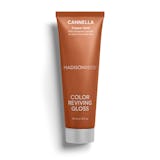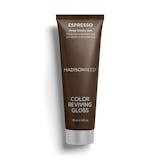Root Smudge vs. Shadow Root vs. Root Melt vs. Root Taps – What’s the Difference?
You’ve heard about root touch-ups numerous times, but there are quite a few options when it comes to concealing your roots. Root smudging is just one of the possibilities. Root smudging and root melting terms may be used interchangeably in the hair color world so let’s chat about the differences between these particular techniques.
Root Smudge
Root smudging is typically done in salons to buffer or blend the darkness of your natural root color with the lighter, highlighted hair. This involves using a shade similar to your natural root color or one to two shades lighter to just slightly bump up your dark roots to blend with the lighter highlights. This can make the regrowth stage less noticeable and can give you an overall lighter, brighter feel along with your highlights.
Root Shadow
Root shadowing is similar to root smudging. It doesn't involve lightening your natural roots but rather deepening the roots where your highlights begin. This helps to soften the line where your highlights begin to give you a slightly deeper shadow near the root area. This is typically done with a demi-permanent color.
Root Taps
Root taps are created by applying a small amount of color to the roots (similar to root shadowing) but only go down about 0.5 inch below your roots. The shade used might not be as dark as a shadow root. This helps to soften the foil lines at the root to give a more blended result overall, but still keeps you as light as possible. This is also typically done with a demi-permanent color, as well as toners.
Root Melt
Root melts go further down the roots than all other techniques we’ve talked about. This gives more of a lived-in balayage effect where your roots gradually melt into lighter mid-lengths and ends. Just like root shadows and taps, this typically utilizes a demi-permanent color.
To see it more clearly, here’s a comparison: root smudges are typically one inch long, while root melts can go down two to four inches.






























